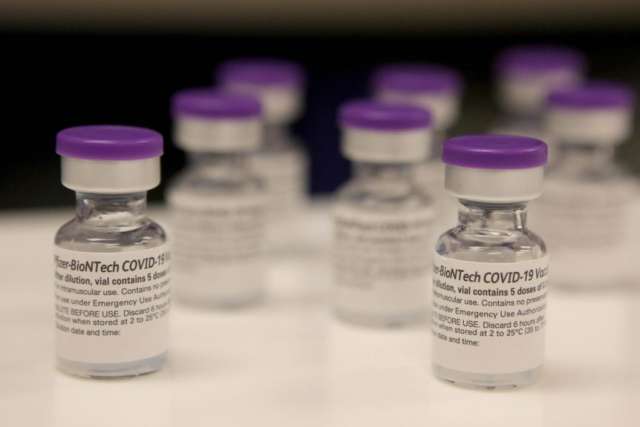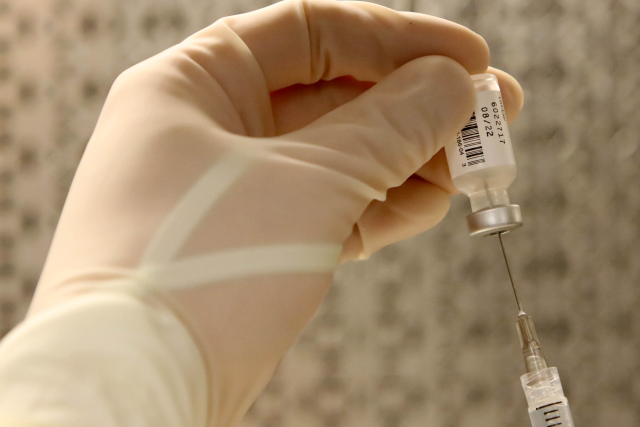As COVID-19 vaccines roll out across the country, there’s growing curiosity and apprehension about potential side effects — particularly to the second dose of the two-shot regimen.
The COVID-19 vaccines from Pfizer and Moderna each require two doses several weeks apart for maximum efficacy. Side effects after injection can include fever, chills, nausea, headache, fatigue, injection-site pain, joint pain and muscle aches. Some vaccine recipients have reported that these temporary effects were more pronounced after the second dose than the first.
“After you get the first vaccination, your body is revving up the immune system and ready to fight COVID if it comes,” says Keith Norris, MD, PhD, a professor of medicine at the David Geffen School of Medicine at UCLA. “Then you get the second vaccination, and your body thinks COVID is there, so it’s a greater response than you had the first time.”

The Pfizer and Moderna vaccines each use messenger RNA (mRNA) technology to instruct cells to make “spike” protein, so named for the spikes on the outside of the coronavirus. Production of this protein stimulates the body’s immune response, generating antibodies to fight what it perceives as a foreign invader. There is no COVID-19 in the vaccine and it can’t cause infection; simply providing the body with instructions to make spike protein is enough to establish an immune response to the disease.
“The first time your body sees this COVID protein, it has a response. And the second time, it’s going to be a bigger response,” Dr. Norris says. “And then if you get exposed to COVID (after receiving two doses of vaccine), the hope is you have such a big response that it knocks the virus out before you even get sick with it.”
Because of the increased immune response after the second dose of vaccine, side effects may be more common, but there’s no way to predict who might experience them. The most frequently reported side effect during clinical trials was injection-site pain, followed by fatigue and headache. These symptoms disappear within a day or two, Dr. Norris says, and may be eased by over-the-counter pain relievers, such as acetaminophen (Tylenol) or ibuprofen (Advil) taken after vaccination.
While such side effects may be uncomfortable, they’re mild compared to the potential discomfort of actual COVID-19 infection, Dr. Norris says. Serious allergic reactions to the COVID-19 vaccines are extremely rare, occurring once or twice per million doses administered. “For everybody else, it’s an inconvenience for a day or two,” he says.
Contracting COVID-19, on the other hand, can be much more serious.
“Many people are really sick for a week or two and they may feel like they need to go to the hospital,” Dr. Norris says. “Others actually do have to be hospitalized and some of them end up in the intensive care unit and some of them end up dying.”

The national death toll from COVID-19 has topped 3,000 daily throughout January. Since the start of the pandemic, about 435,000 people have died from COVID-19 in the U.S.
Some unknowns about the vaccines remain. While the Centers for Disease Control and Prevention has said vaccine recipients can mix and match vaccines – taking a second dose from Pfizer when the first came from Moderna, or vice versa, for example – UCLA Health advises against it. No studies support this practice, Dr. Norris says, adding that his preference would be to delay a second dose beyond the recommended three- or four-week interval due to unavailability rather than accept one from a different manufacturer.
Scientists continue to study how long conferred immunity from the two-dose regimen might last and whether there are long-term side effects. Volunteers who received the vaccines during clinical trials have been studied for about six months so far, Dr. Norris says.
“We know for most vaccines, historically, most of the side effects happen in the first few weeks. So it’s very rare to have long-term side effects,” he says. “But we do know there can be long-term side effects for many people who catch COVID.”
Researchers estimate that at least 10% of people who recover from the infection may suffer “long hauler” symptoms that last for months, including shortness of breath, fatigue and brain fog.
One thing perhaps not talked about enough are the positive side effects from the COVID-19 vaccines. Besides providing close to 95% immunity after two doses, they also contribute to a sense of optimism, Dr. Norris says.
“I felt optimism and relief after my first dose,” he says. “I can’t wait to get to the point after the second dose — about two weeks after your second dose is the point where it looks like you’re pretty immune.”
Even after developing full immunity following both doses, masks, physical distancing and hand-washing are still essential, he says, until the majority of the population is vaccinated.
“Knowing that after I’ve had the second dose my chance of getting COVID and being so sick that I have to go to the hospital or could die is close to zero — that feels wonderful to me,” Dr. Norris says. “And then thinking, wow, if this goes on at a bigger level and enough people take it, we really can get back closer to normal, at least, sometime this year.”



